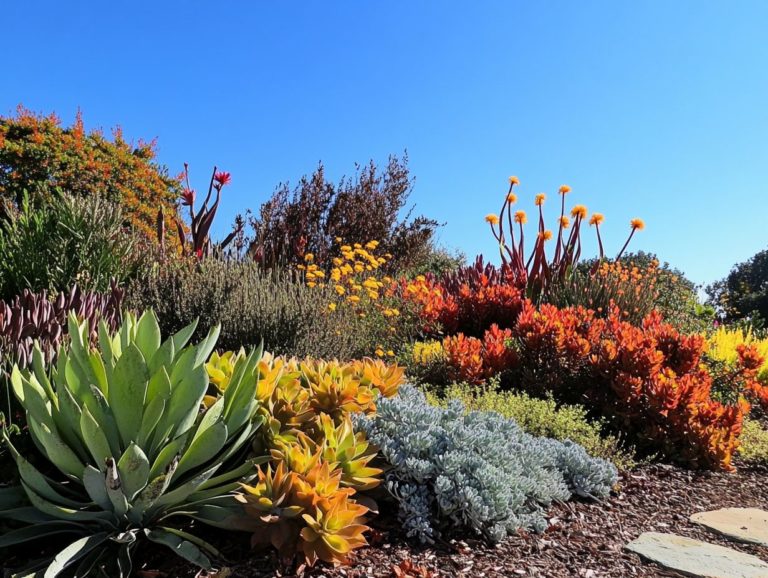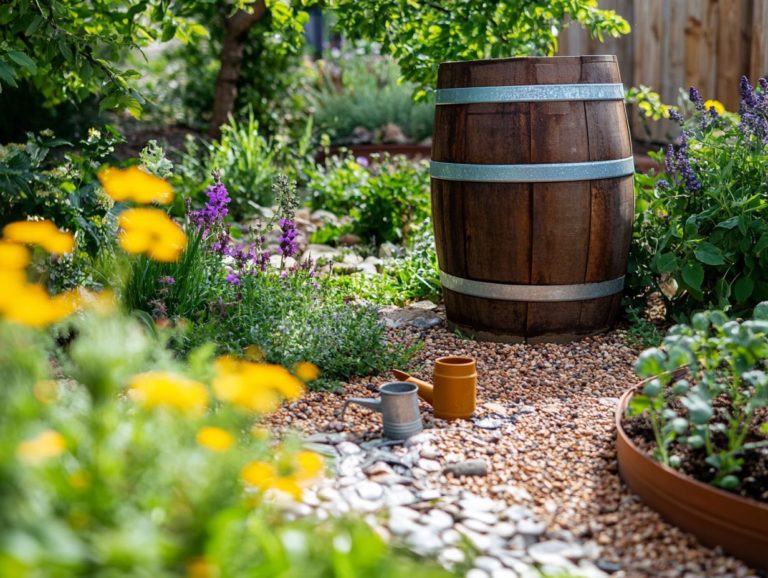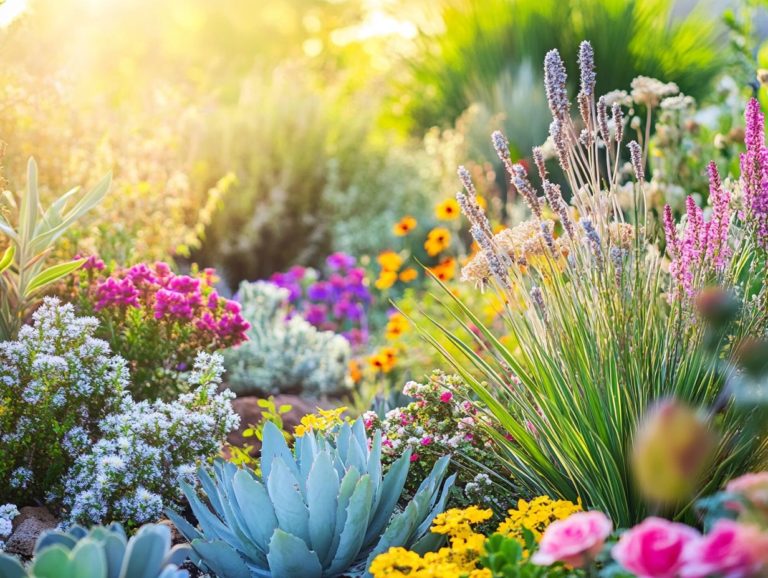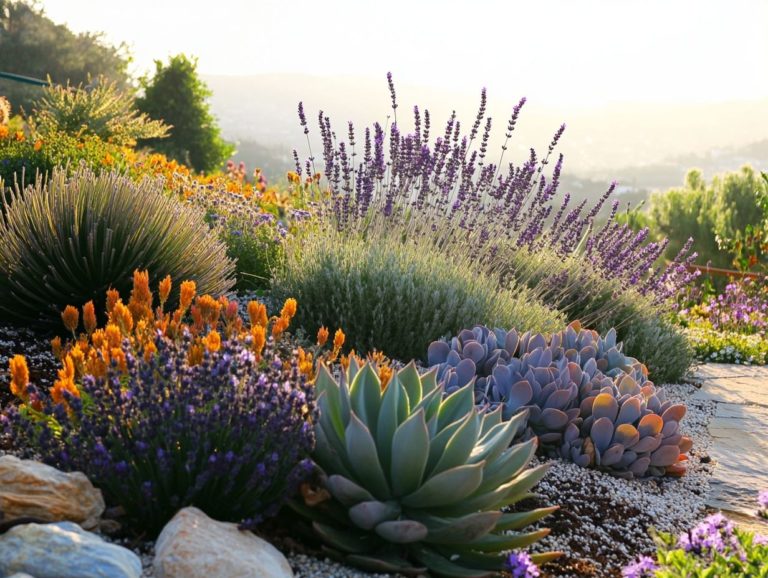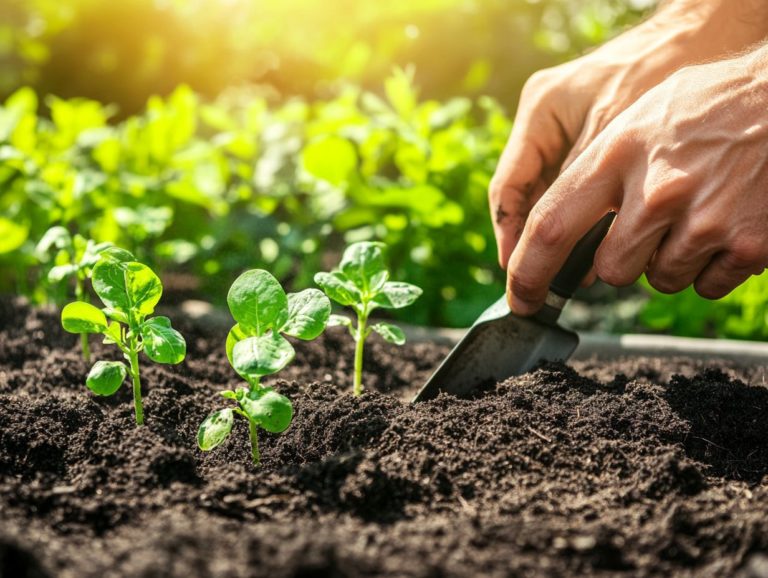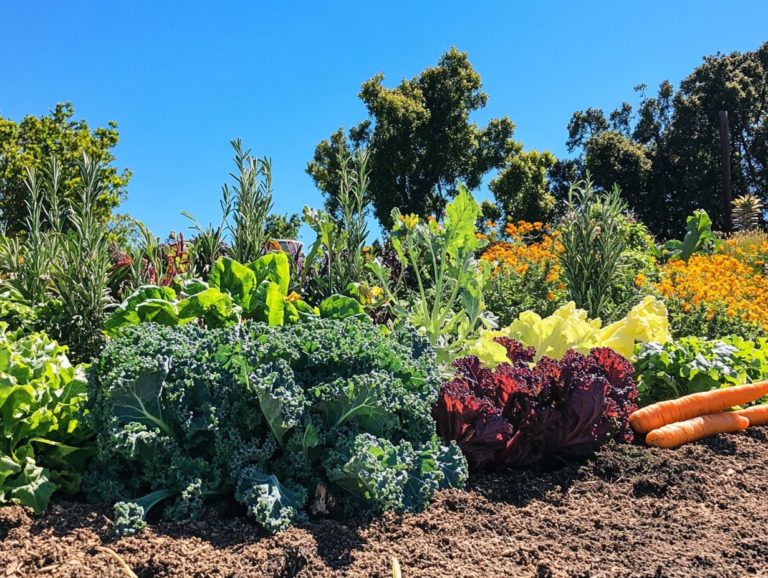How to Enhance Drought Resistance in Existing Gardens?
Drought resistance is becoming increasingly essential as climate change ushers in unpredictable weather patterns and water shortages.
Understanding how to cultivate a garden that flourishes even in arid conditions can transform your landscape and conserve precious resources.
This article delves into the concept of drought resistance, emphasizing its significance, helping you assess your garden’s current resilience, and sharing practical techniques for enhancement.
Whether you re starting from scratch or looking to elevate an existing garden, you ll discover valuable insights to create and maintain a vibrant, drought-resistant oasis.
Contents
- Key Takeaways:
- Understanding Drought Resistance
- Assessing Your Garden’s Drought Resistance
- Maintaining Drought Resistance in Your Garden
- Frequently Asked Questions
- How can I enhance drought resistance in my existing garden?
- What are some drought-resistant plants that I can add to my existing garden?
- How can I improve the soil quality of my existing garden to make it more drought-resistant?
- Is it necessary to mulch my existing garden to enhance its drought resistance?
- What is the best way to water my existing garden to enhance its drought resistance?
- Can I still have a beautiful garden while enhancing its drought resistance?
Key Takeaways:
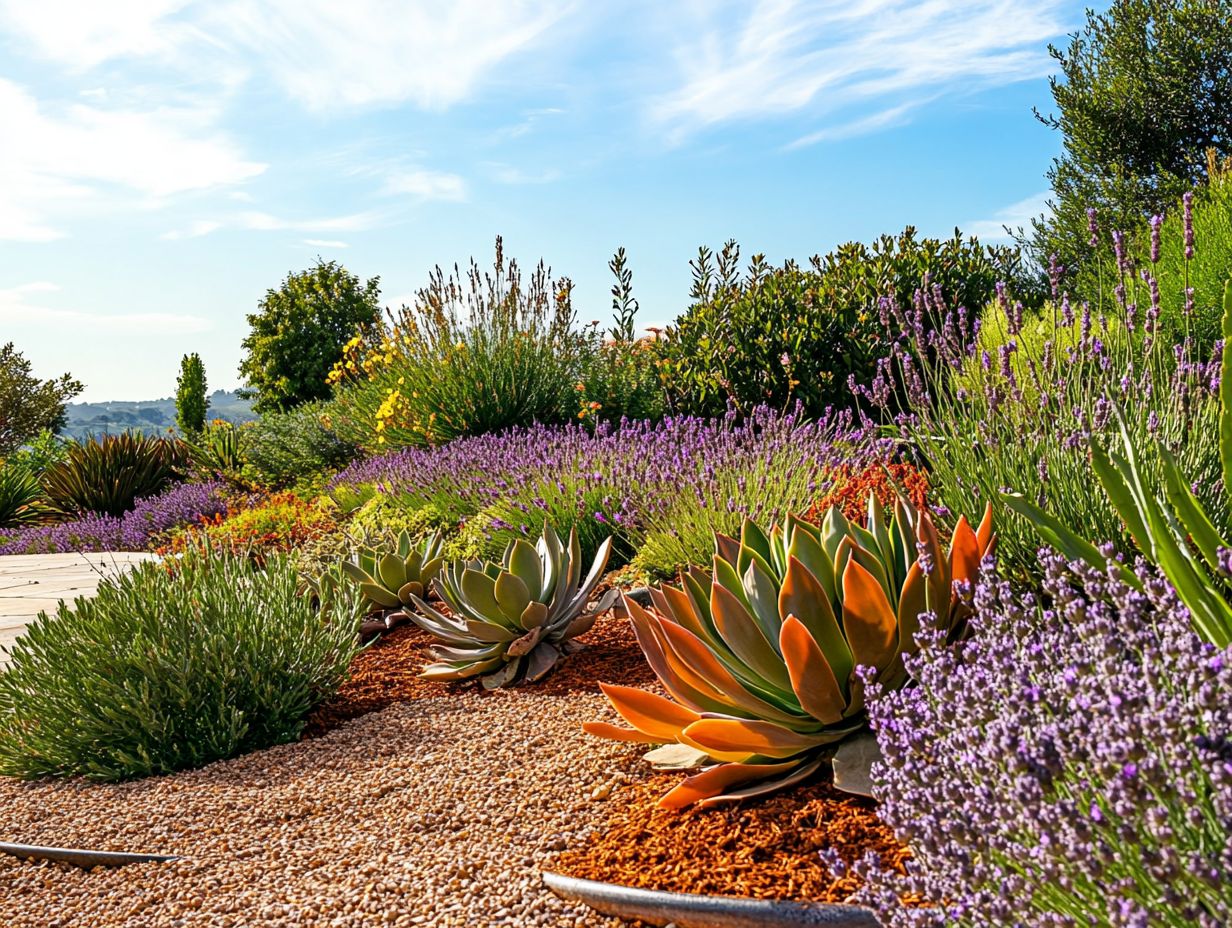
- Understand the concept of drought resistance and its significance in gardens.
- Assess your garden’s soil and plant types to determine its current level of drought resistance.
- Implement water conservation strategies and carefully select and maintain plants to enhance drought resistance in your garden.
Understanding Drought Resistance
Understanding drought resistance is essential for anyone aiming to cultivate a sustainable garden, especially in regions like California and Australia, where water shortages are becoming increasingly prevalent. Learning how to use drought gardening principles in landscaping can make a significant difference.
This concept focuses on the resilience of certain plants, particularly drought-tolerant varieties, which excel in dry conditions by efficiently utilizing limited water resources while preserving soil health.
It also encompasses various landscape design techniques that bolster plant resilience against drought, ultimately fostering a more sustainable environment and ecosystem.
What is Drought Resistance?
Drought resistance refers to your ability to cultivate plants that not only survive but flourish in conditions of water scarcity.
These remarkable plants possess distinct special features that enable them to adapt effectively to limited water availability. For instance, many have developed deeper root systems that reach into underground moisture, alongside specialized leaf structures designed to minimize water loss through the process plants use to release water into the air.
Soil health is pivotal in this context; healthy soils retain moisture and provide essential nutrients that support these resilient plants. By implementing effective water management strategies, you enhance environmental sustainability, ensuring that these drought-resistant plants can continue to thrive even as conditions evolve.
Importance of Drought Resistance in Gardens
Drought resistance is vital for your garden, especially as climate change and water shortages become pressing concerns. Learning how to use companion planting in drought gardening can enhance your garden’s resilience.
By incorporating drought-resistant plants, you not only reduce water usage but also cultivate an environment that enhances soil fertility and encourages sustainable gardening practices.
Select drought-resistant varieties like lavender, succulents, or native grasses for a stunning landscape that saves water!
These resilient plants often develop deeper roots in search of moisture, which aerates the soil and supports beneficial microorganisms.
This harmonious relationship ultimately contributes to healthier ecosystems, making your home garden not just a visual delight but also crucial for environmental well-being. Embracing these plants gives you the power to take an active role in addressing ecological challenges while enjoying a flourishing garden.
Assessing Your Garden’s Drought Resistance
Assessing your garden’s drought resistance is an essential step in ensuring your plants can thrive even during water shortages. This process not only fortifies your garden against arid conditions but also helps you learn how to prepare soil for drought-resistant plants, fostering a sustainable and organic environment that benefits both your plants and the ecosystem.
Take actionable steps today to strengthen your garden s resilience against drought!
Evaluating Soil and Plant Types
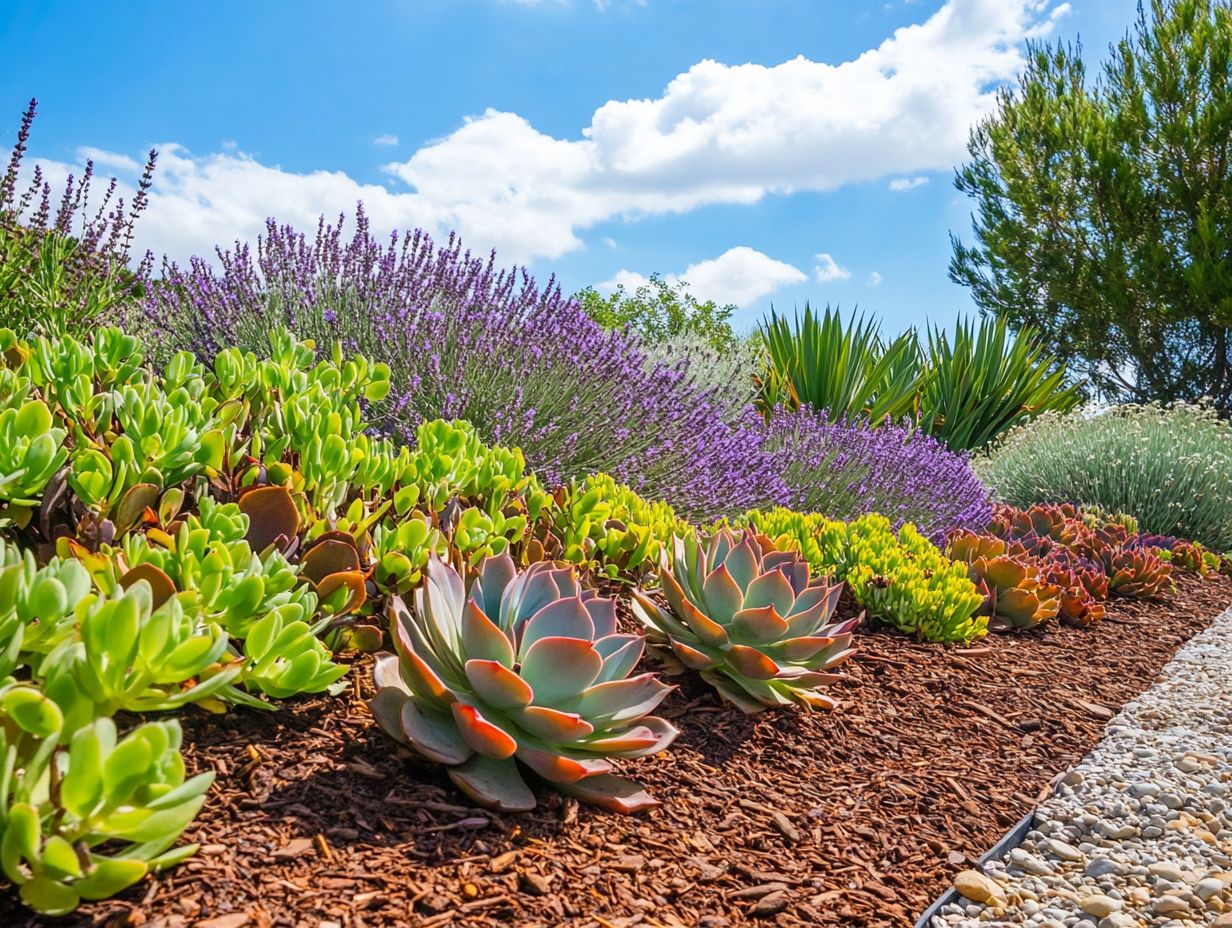
Evaluating the types of soil and plants in your garden is crucial for determining its overall ability to survive dry weather and resilience.
Different soil types, like sandy, clay, and loamy, offer distinct drainage capabilities. These can greatly influence how well your garden retains water.
For example, sandy soils drain quickly but may lack essential nutrients. Meanwhile, clay soils retain water effectively yet can become compacted, hindering root growth.
Incorporating organic matter, such as compost and mulch, is vital for making soil healthier. It improves soil structure and moisture retention, allowing plants to access essential nutrients more efficiently.
Choosing various native plants, like lavender and succulents, can be a game-changer. These species demonstrate remarkable adaptability to low-water conditions.
By incorporating such plants, you not only create a vibrant landscape but also champion sustainability in water usage.
Techniques for Enhancing Drought Resistance
Techniques for enhancing drought resistance in your garden elevate the overall health of your plants. For more information, explore best practices for drought-resistant gardening, which embody sustainable gardening practices that conserve water and resources.
Embracing these methods allows you to cultivate a thriving garden while making a positive impact on the environment.
Water Conservation Strategies
Water conservation strategies are vital for boosting drought resistance. They secure the long-term health of your garden.
By adopting methods like drip irrigation, which delivers water straight to the roots of your plants, you can significantly minimize waste while maximizing efficiency.
Consider implementing rainwater harvesting as well. This practice involves collecting and storing rainwater for later use, greatly reducing your reliance on municipal water sources.
Mulch helps retain soil moisture effectively by limiting evaporation. It also suppresses weeds that compete for that precious hydration.
Additionally, incorporating compost into your garden enhances soil structure and increases its ability to retain water. This ensures your plants receive the moisture they need during dry spells.
Combine these techniques now to ensure your garden thrives, even in tough conditions!
Plant Selection and Maintenance
Choosing the right plants and maintaining them properly are key steps to build a garden that can survive dry conditions.
When considering your options, it’s important to select both drought-tolerant species and native plants suited to your local climate. This promotes biodiversity while reducing water use.
These plants typically require less irrigation and tend to be more resilient against pests and diseases.
Remember, factors such as soil type, sunlight exposure, and overall landscape design are pivotal in making your selections.
Embracing organic gardening practices, like enriching your soil with compost, can significantly boost plant health. Incorporating legumes is a smart strategy, as they naturally return nutrients to the soil.
Techniques such as mulching are also beneficial, helping retain moisture and suppress weeds. This ensures that both native and drought-resistant plants thrive with minimal intervention.
Creating a Drought-Resistant Garden
Building a drought-resistant garden is an exciting challenge that can transform your outdoor space! By carefully integrating water-saving techniques, you can ensure the vitality of your plants and learn how to keep drought-resistant plants healthy while also preserving soil fertility.
This approach enhances the resilience of your garden and contributes to a sustainable ecosystem.
Step-by-Step Guide to Design and Implementation
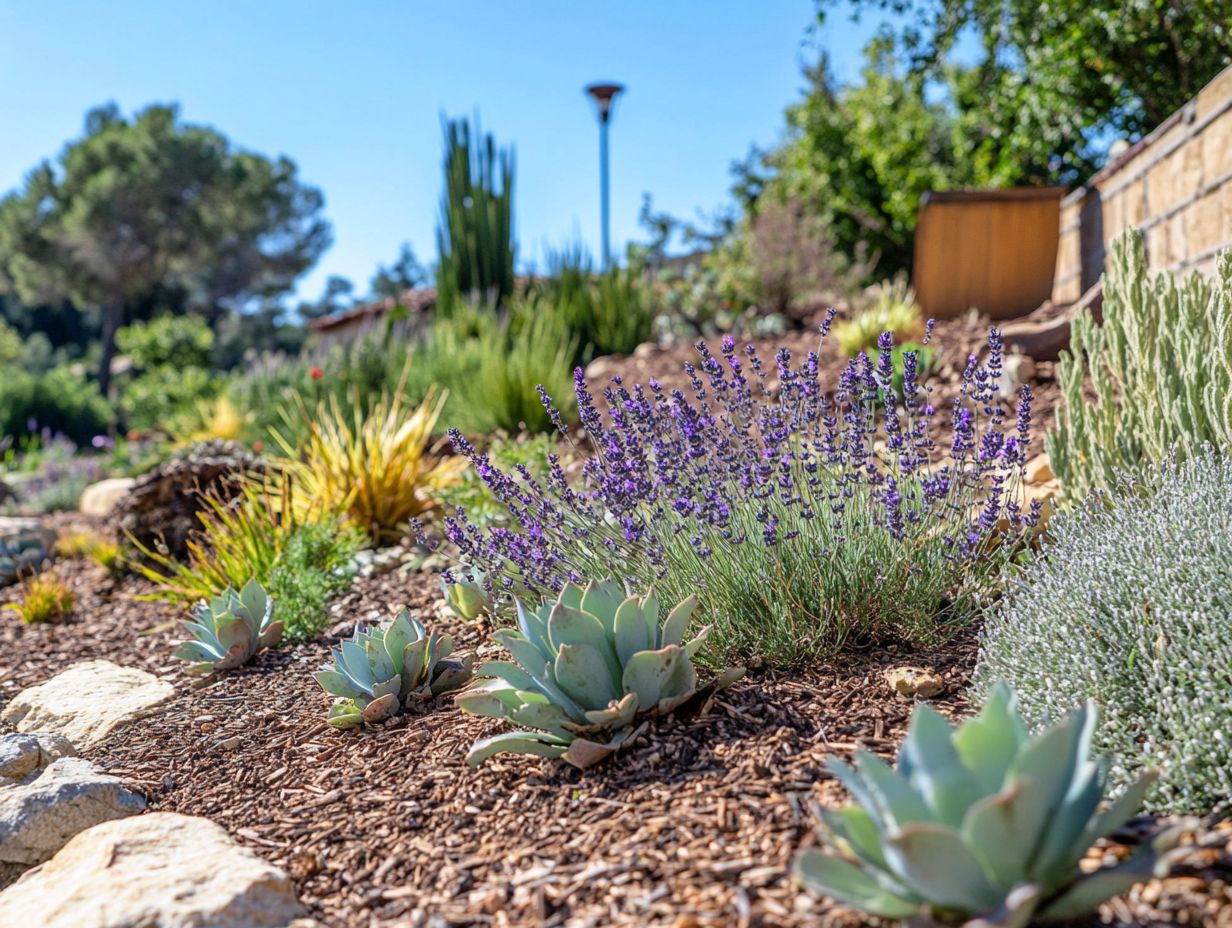
A step-by-step guide to designing and implementing a drought-resistant garden can transform your approach and secure long-term sustainability. Embrace thoughtful strategies and explore organic treatments for drought-resistant gardens to cultivate an eco-friendly oasis that flourishes even in dry conditions.
Start by assessing your garden layout. Sketch a plan to visualize where to place plants and design walking paths. Next, choose suitable plants that are native or adapted to arid climates. This choice enhances biodiversity and minimizes water requirements.
Enhance your soil quality through composting and mulching to enrich the ground, significantly improving moisture retention. Finally, integrate efficient methods to water plants, like drip systems or rainwater harvesting, ensuring you use water wisely while aligning with sustainable gardening practices.
Maintaining Drought Resistance in Your Garden
Maintaining drought resistance in your garden demands ongoing attention and care. To achieve this, it’s important to learn how to maintain drought-resistant landscapes, focusing on sustainable practices to enhance soil health and bolster plant vitality over time.
Long-Term Care and Maintenance Tips
Adopt long-term care and maintenance strategies to elevate the drought resistance of your garden by learning how to plan a drought-resistant garden layout while fostering sustainable practices.
Integrate regular soil testing into your gardening routine to maintain balanced nutrient levels, ensuring your plants thrive even in challenging conditions. Embrace organic fertilization techniques, such as composting and mulching with natural materials, to enrich the soil and enhance its moisture retention capabilities.
Equally important is adjusting your care practices according to seasonal changes. This may involve modifying watering schedules or implementing various mulching strategies to preserve soil structure. By observing weather patterns, you can adapt your methods, conserve water, and keep your plants vibrant throughout the year.
Frequently Asked Questions
How can I enhance drought resistance in my existing garden?
To enhance drought resistance in your existing garden, follow these steps:
- Choose drought-resistant plants: Opt for plants that are native to your region and naturally tolerant to dry conditions.
- Improve soil quality: Add organic matter to your soil to enhance its water-holding capacity.
- Mulch: Apply a layer of mulch on top of the soil to reduce water evaporation and keep the soil cool.
- Water deeply and infrequently: This encourages plant roots to grow deeper into the soil, making them more drought-resistant.
- Group plants according to their water needs: This will ensure that all plants receive adequate water without wasting it on plants that do not need as much.
- Use efficient irrigation methods: Drip irrigation systems or soaker hoses can dramatically reduce water usage compared to traditional sprinklers.
What are some drought-resistant plants that I can add to my existing garden?
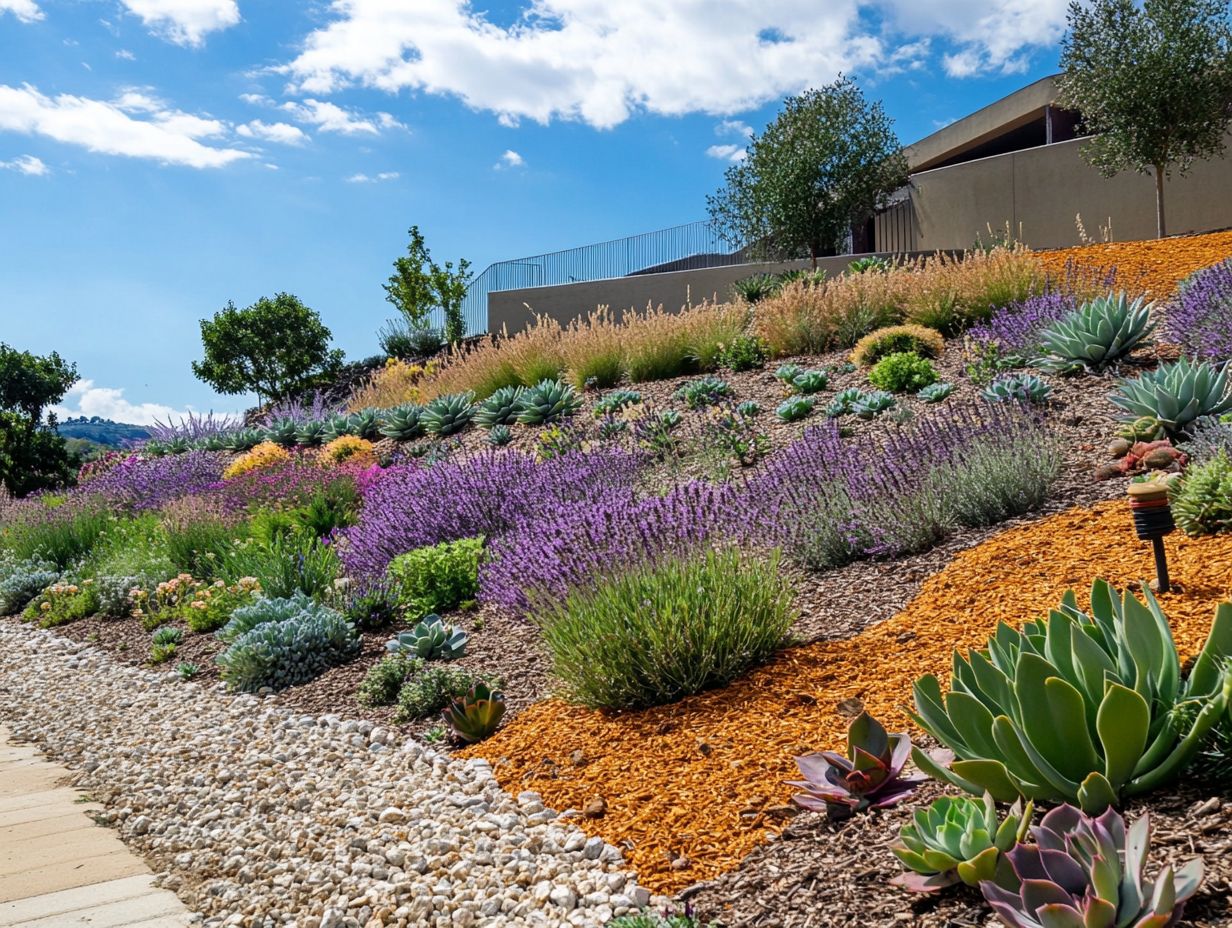
Examples of drought-resistant plants include succulents, cacti, lavender, rosemary, yarrow, and ornamental grasses. It s best to choose plants that are native to your region as they are naturally adapted to the local climate.
How can I improve the soil quality of my existing garden to make it more drought-resistant?
Add organic matter such as compost, leaf mulch, or aged manure to your soil to increase its water-holding capacity. This will help the soil retain moisture for longer periods and reduce the need for frequent watering.
Is it necessary to mulch my existing garden to enhance its drought resistance?
Mulching is highly recommended to enhance drought resistance. A layer of mulch retains moisture in the soil, suppresses weed growth, and keeps the soil cool. It also adds organic matter to the soil as it decomposes, improving its overall quality.
Don t wait! Start designing your drought-resistant garden now!
In summary, by choosing the right plants, improving soil quality, and implementing effective watering strategies, you can create a beautiful, drought-resistant garden. To ensure its longevity, learn how to winterize drought-resistant gardens so it thrives year-round.
What is the best way to water my existing garden to enhance its drought resistance?
Water deeply and infrequently. This encourages plant roots to grow deeper into the soil, allowing them to access moisture from lower levels.
Avoid frequent shallow watering. Shallow roots make plants more vulnerable to drought conditions.
Can I still have a beautiful garden while enhancing its drought resistance?
Yes, you absolutely can! Many stunning drought-tolerant plants bring color and texture to your garden.
Group plants by their water needs. Using mulch and efficient irrigation methods will help you maintain a vibrant, drought-resistant garden.

